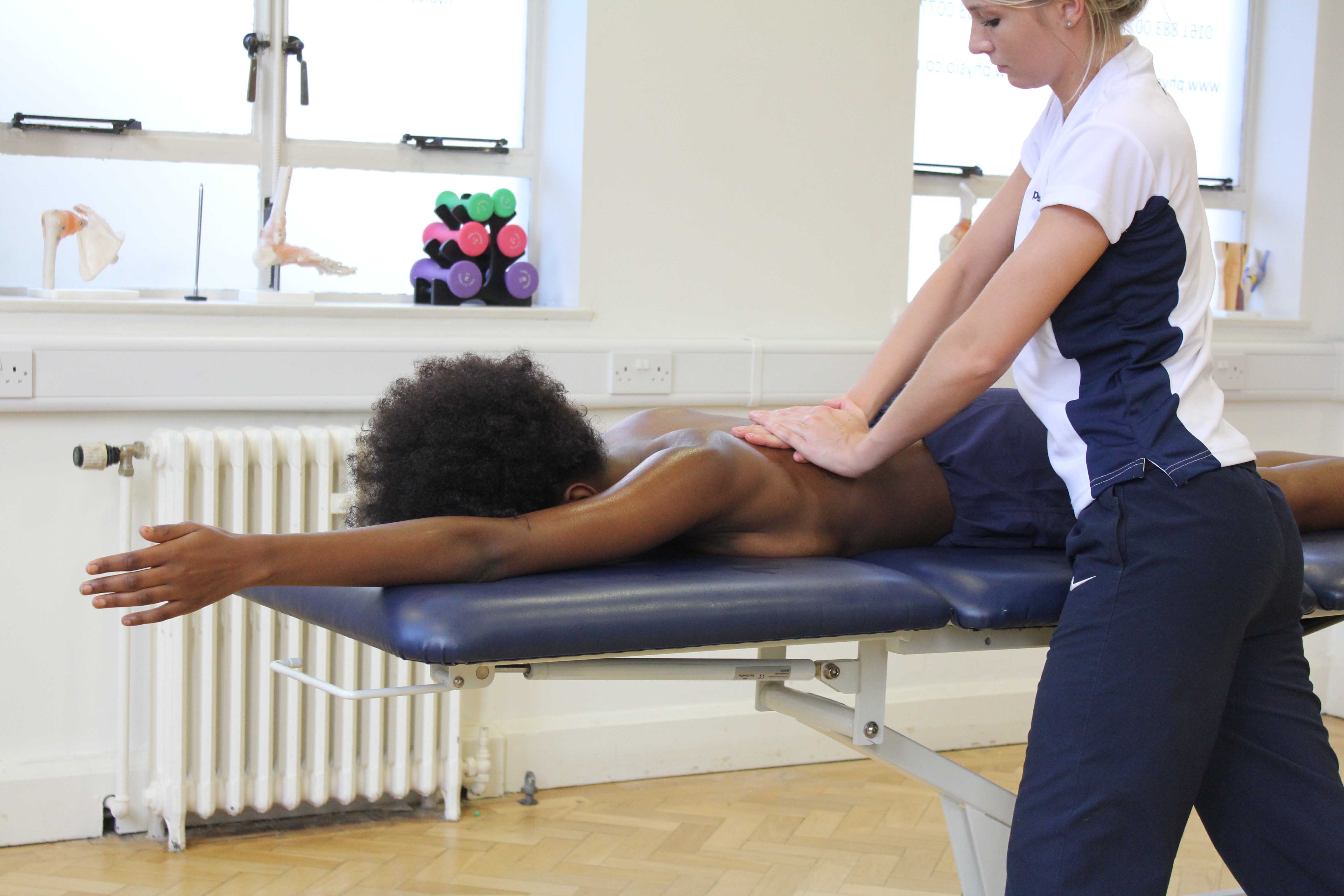What is trapezius muscle palsy?
Trapezius muscle palsy occurs when there is damage to the nerve that controls the trapezius muscle causing it to waste and become weak. The trapezius muscle connects your shoulders to your neck and it allows you to shrug your shoulders, raise your shoulder blades and helps you to raise your arms. Trapezius muscle palsy can restrict everyday functional tasks.
 Above: Therapist soft tissue massage of trapezius and shoulder joint.
Above: Therapist soft tissue massage of trapezius and shoulder joint.What causes trapezius muscle palsy?
The cause of trapezius muscle palsy is damage to the Spinal Accessory Nerve, which controls the trapezius muscle. Damage to this nerve can be caused by:
- Trauma to the neck
- A result of surgery to the neck
- A jerking injury of the arm
- A jerking injury of the neck
What are the symptoms of trapezius muscle palsy?
Symptoms of trapezius muscle injury can include:
- Visible trapezius wasting
- Shoulder visibly lower than the opposite shoulder
- Some pain in trapezius muscle
- Muscle weakness, especially when shrugging shoulders and raising shoulder blades or arms
- Reduced range of movement at the shoulder
Physiotherapy For Trapezius Muscle Palsy
Physiotherapy can be effective in treating trapezius muscle palsy. Treatment is aimed at restoring function to the trapezius muscle. Physiotherapy treatment may include:
- Electrotherapy
- Stretching exercises
- Strengthening exercises
- Practice of functional movements
 Above: Our physiotherapists will suggest a number of treatment options to help reduce any nerve related conditions.
Above: Our physiotherapists will suggest a number of treatment options to help reduce any nerve related conditions.Can trapezius muscle palsy cause any long-term effects?
Physiotherapy can be effective in treating trapezius muscle palsy. If there is still pain and loss of function after physiotherapy intervention then surgery may be required. Physiotherapy would then be important in rehabilitation after the surgery.
To arrange an assessment with Physio.co.uk please contact us or call 0330 088 7800.

 0330 088 7800
0330 088 7800


































